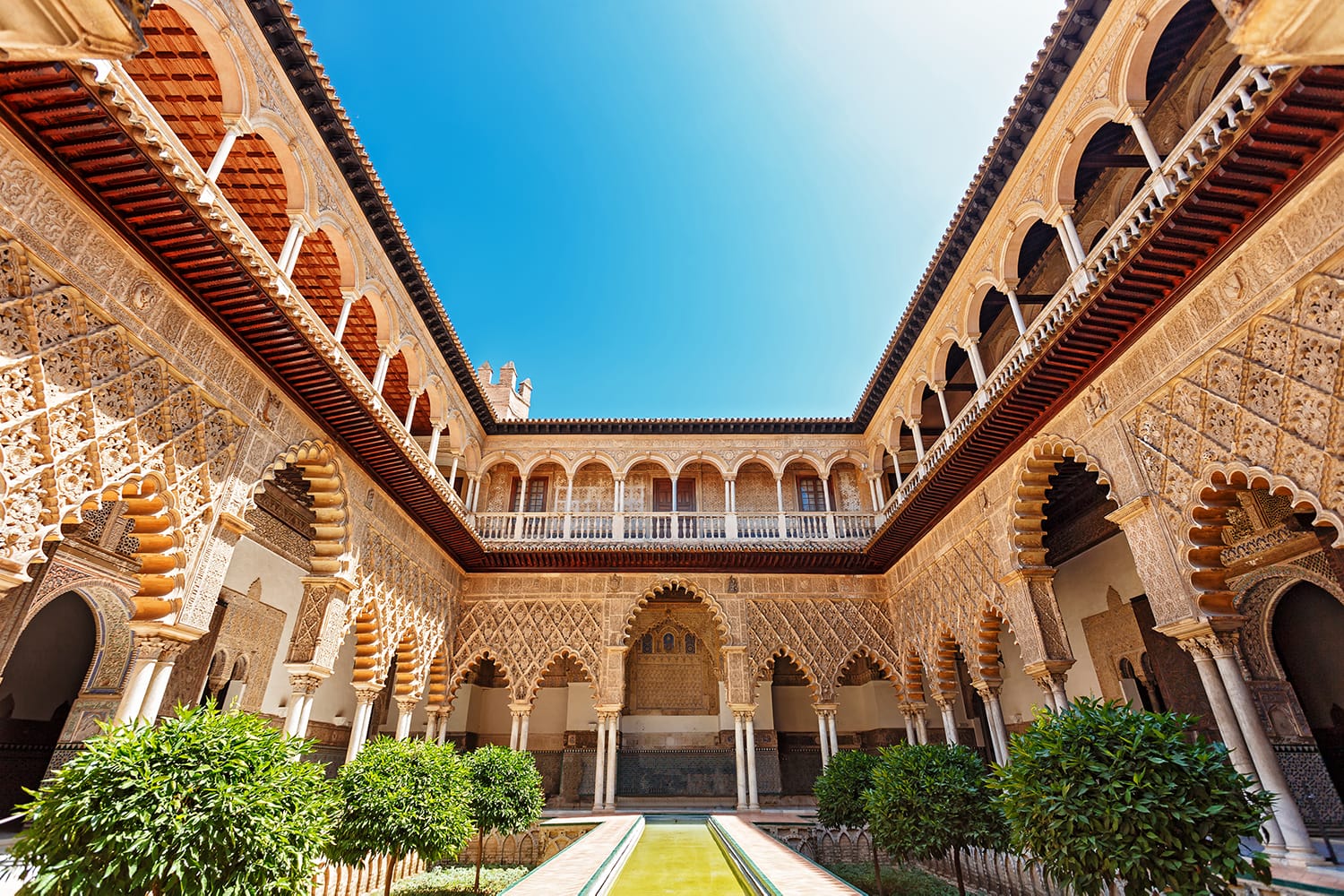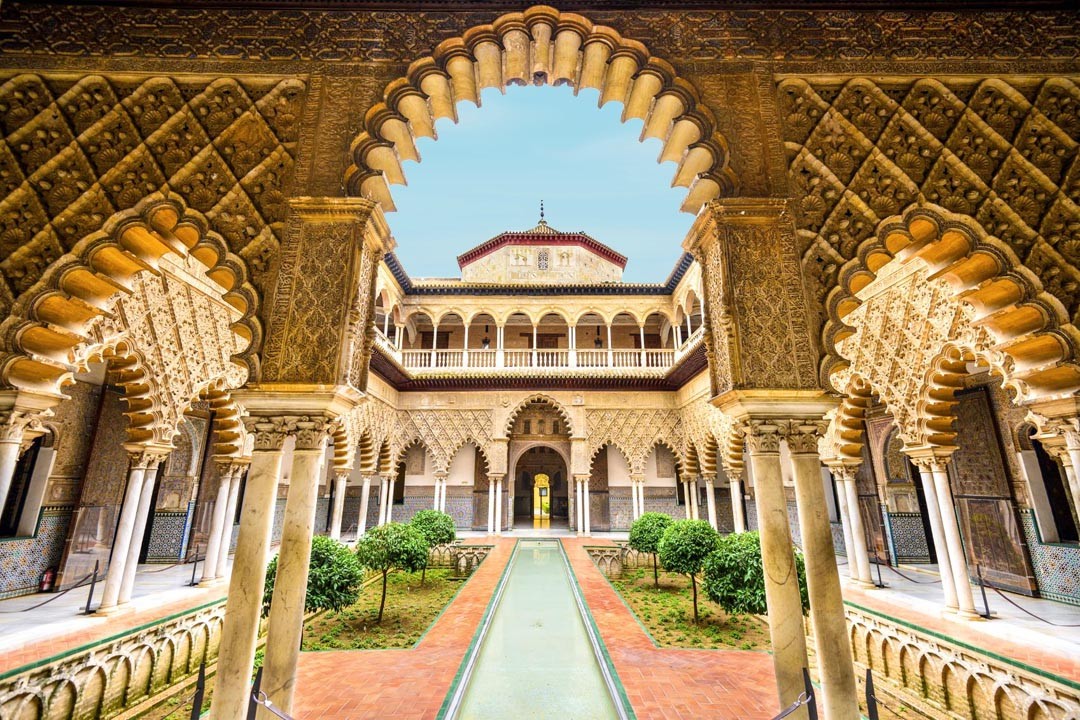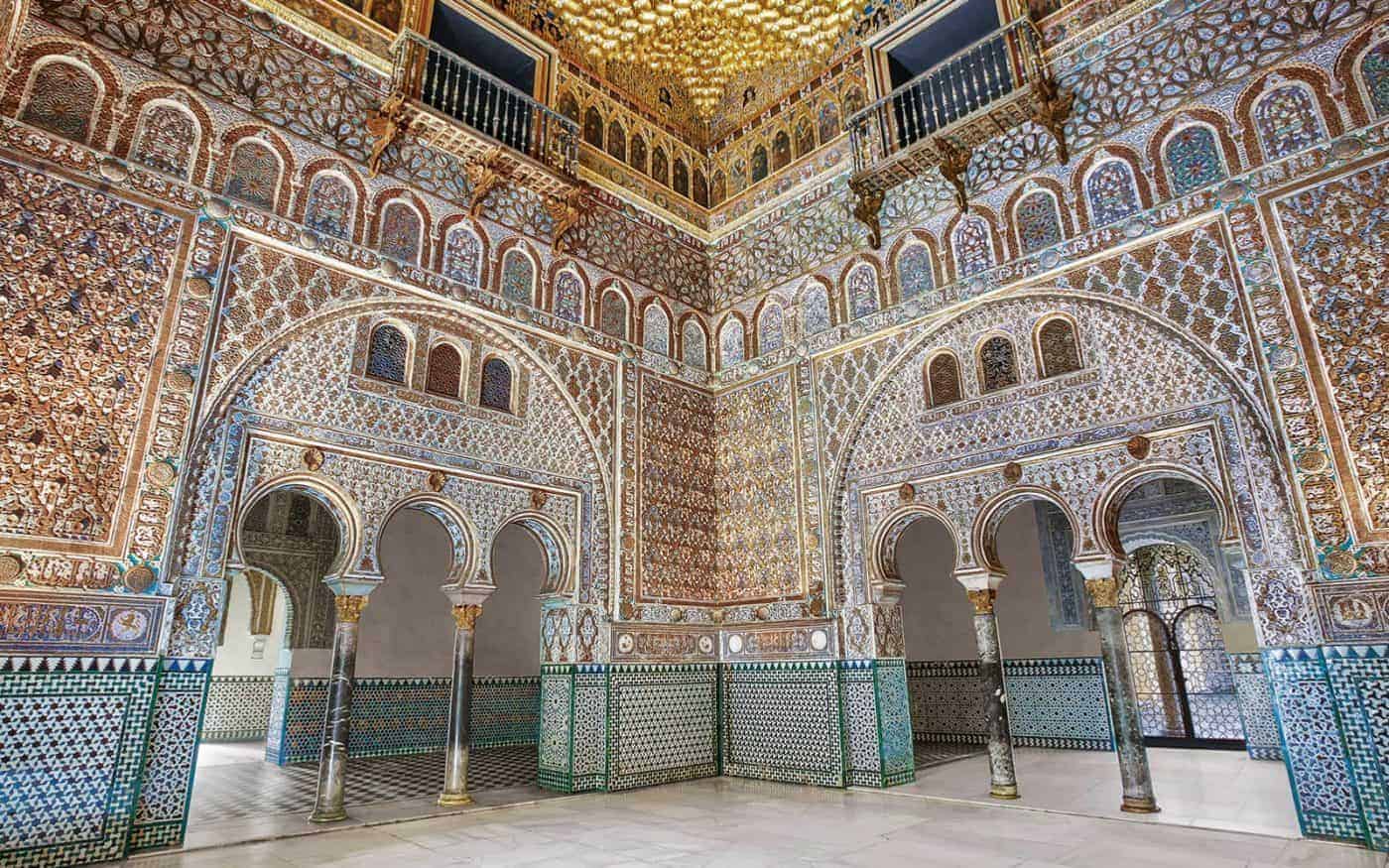The Real Alcázar Of Seville Spain
Seville, the capital city of Spain's Andalusia region, is a city full of rich history and culture that has a lot to offer its visitors. From its beautiful Moorish architecture to its delicious cuisine and vibrant nightlife, Seville is a city that should be on every traveler's bucket list.

Here is the perfect itinerary for spending 2 days discovering the best of Seville:
Day 1 in Seville
Start your day by exploring the stunning Royal Alcázar of Seville, a UNESCO World Heritage Site and one of the city's must-visit attractions. The palace is a stunning example of Moorish architecture, with its intricate tilework, beautiful gardens, and peaceful water features. Plan to spend at least a couple of hours exploring the palace.
Afterwards, head over to the colossal Seville Cathedral - the largest Gothic cathedral in the world! The cathedral is home to the tomb of Christopher Columbus and offers great views of the city from its bell tower. You may also want to check out the Giralda Tower, which was originally constructed as a minaret for the mosque that stood on the site before the cathedral was built.
Take a break for lunch at one of the many restaurants located in the narrow streets surrounding the cathedral. Seville's cuisine is a mix of Andalusian and Moorish flavors, with lots of fresh seafood dishes and tapas to choose from.
In the afternoon, head to the Plaza de España, a huge, ornate square built for the Ibero-American Exposition of 1929. The square is surrounded by a beautiful moat, and its walls are decorated with tiles representing different Spanish provinces. It's a great place to take a walk, relax, and enjoy the sunshine.
Finish your first day in Seville by visiting the historic Triana neighborhood, located on the other side of the Guadalquivir River. The neighborhood is known for its lively nightlife and flamenco culture, so it's a perfect spot to grab some dinner and catch a show.
Day 2 in Seville
Start your second day in Seville by exploring the Barrio Santa Cruz, Seville's charming old Jewish quarter. The neighborhood is full of narrow, winding streets, colorful bougainvillea, and hidden squares, making it a great place to wander and get lost in. Stop by Plaza de los Venerables for a coffee or breakfast, and then head to the Hospital de los Venerables, a Baroque building that now houses a museum on the life and work of the painter Diego Velázquez.
Afterwards, walk to the Metropol Parasol, also known as Las Setas de Sevilla (Seville's Mushrooms), a modern structure that was built in the heart of the old town. It offers great views of the city, as well as housing a marketplace, bar and restaurant.
Next, head to the Casa de Pilatos, a beautiful mansion built in the Renaissance style. The mansion is famous for its beautiful Andalusian tiles, as well as its Italianate gardens. Make sure to book a guided tour to learn more about the history and architecture of the house.
For lunch, head to the Mercado de la Feria, Seville's oldest market. Here, you'll find a variety of stalls selling fresh produce, meat, fish, and more. Be sure to sample some of the local specialties like salmorejo (a cold tomato soup) or carrillada (slow-cooked pork cheeks).
In the afternoon, head to the Torre del Oro, a 13th-century tower located on the banks of the Guadalquivir River. The tower has been used as a naval museum since the 1930s, and offers great views of the river and the city.
Wrap up your two days in Seville with a visit to the Casa de la Memoria, a flamenco cultural center located in the historic Arenal neighborhood. Here, you can watch live flamenco performances and learn more about the history and culture behind this iconic Spanish art form.
History of Seville
Seville has a long and fascinating history, dating back to the Roman Empire. The city was conquered by the Moors in the 8th century, and became a major center of Islamic culture and scholarship. It was also an important trading center, thanks to its location on the Guadalquivir River.
After the Reconquista in 1248, Seville became an important cultural and economic center for the Christian kingdom of Castile. It was home to the Spanish Inquisition, which led to the persecution and expulsion of Spanish Jews in the 15th century.
During the Age of Exploration, Seville played a key role in the discovery and colonization of the Americas. Christopher Columbus made Seville his base of operations, and the city became a center of commerce and trade with the New World.
Today, Seville is known for its rich history and vibrant cultural scene, with plenty to see and do - from its stunning architecture to its world-renowned flamenco and cuisine.
Travel Tips for Seville
Here are a few tips to help you make the most of your visit to Seville:
- Plan ahead: Seville is a popular destination, so it's always a good idea to book tickets to major attractions in advance to avoid long lines.
- Take comfortable shoes: Seville is a very walkable city, but you'll want to wear comfortable shoes as there are plenty of cobblestone streets and uneven terrain.
- Watch your belongings: As with any major city, you'll want to be mindful of pickpockets and keep an eye on your belongings.
- Try the local cuisine: Seville is famous for its tapas and fresh seafood, so be sure to try some of the local specialties while you're here!
- Be respectful: Spain is a Catholic country, and Seville is home to a number of important religious sites, so be sure to dress appropriately and be respectful of local customs.
FAQs
What is the best time of year to visit Seville?
The best time to visit Seville is in the spring (April to June) or fall (September to November), when the weather is mild and there are fewer crowds. However, Seville is beautiful year-round, so any time is a good time to visit!
How do I get around Seville?
Seville is a very walkable city, but if you're looking to cover more ground, there are plenty of buses and taxis available. The city also has a bike-sharing program called Sevici, which is a great way to explore the city on two wheels.
What are some other must-visit attractions in Seville?
Other popular attractions in Seville include the Plaza de Toros de la Maestranza (a beautiful bullring), the Metropol Parasol, and the Museum of Fine Arts.
Is Seville safe for tourists?
Seville is generally a safe city for tourists. However, as with any major city, it's always a good idea to be mindful of your belongings and take precautions to avoid pickpockets and other petty crimes.
With its beautiful architecture, rich history, and vibrant culture, Seville is a must-visit destination for any traveler. Whether you're exploring the city's stunning palaces and cathedrals or soaking up the local cuisine and nightlife, there's something for everyone in this beautiful Spanish city.



Post a Comment for "The Real Alcázar Of Seville Spain"